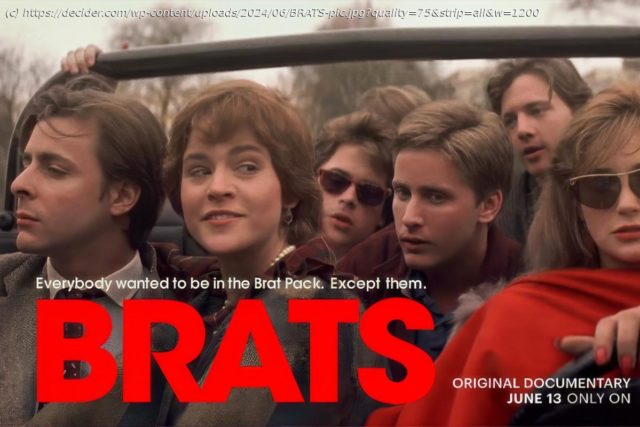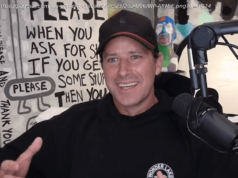The actor tracks down his fellow ’80s stars to look back on a phenomenon.
Brats (now streaming on Hulu) is the latest in a recent, seemingly endless string of Hollywood-retrospective documentaries ranging from fascinating navel-gazing indulgences bankrolled by their subjects (docs about Sylvester Stallone and Pamela Anderson) to documentaries-as-therapy sessions (profiling Val Kilmer and Michael J. Fox). This one lands squarely in the middle, as Andrew McCarthy, best known for starring in ’80s touchstones Pretty in Pink and St. Elmo’s Fire, looks back on the “Brat Pack,” the deathless label that was slapped on him and a handful of young fellow actors who frequently worked together, and would ultimately help define their generation. And I use the word “slapped” with purpose and intent, because that’s how McCarthy felt about the term at the time – and still feels, to an extent. This is his exploration of what it means now, nearly four decades later.
The Gist: In 1985, New York Magazine writer David Blum set out to profile rising Hollywood star Emilio Estevez. While hanging out with the actor, Blum realized Estevez was among a wave of young talent who were the face of a tsunami-sized trend: movies bullseyeing audiences in their teens and early 20s. “Studios discovered the box office potential of a young audience,” McCarthy says in voiceover, “and they aimed their moneymaking tractor beam right at it.” Blum came up with a catchy catchall name for this quasi-collective: the Brat Pack. The label stuck like crazy glue. It was a quippy, cutesy riff on the old-guard Rat Pack, who were being usurped by a new generation. It also was a bit… mean. And the article chided the young stars for their hard-partying lifestyles and lack of formal, professional training. McCarthy describes the first time hearing the phrase “Brat Pack” as being “stabbed in the back.” He felt his career take a hard left, that no major players in the movie business would take him and his colleagues’ work seriously.
Is McCarthy bitter about this? Maybe a little. He’s on-screen constantly in Brats, because he’s the director and it’s his project, his idea to take pause and reflect on what the phrase meant back then and what it means now. Those of us who grew up in the ’80s know how monumental some of those movies were: The Breakfast Club, Pretty in Pink, Sixteen Candles, The Outsiders and others simultaneously reflected and defined the experiences of many, many young people. We saw it as a phenomenon then, and a cultural movement now. The films were and still are lots of fun, inspiring good memories, laughs and nostalgia; but couched within them was an emotional earnestness that helps them endure. For many, the Brat Pack inspires, for lack of a better term, great heaping wads of warm fuzzies.
Home
United States
USA — Cinema Stream It Or Skip It: ‘Brats’ on Hulu, Andrew McCarthy’s Lightly Therapeutic...






